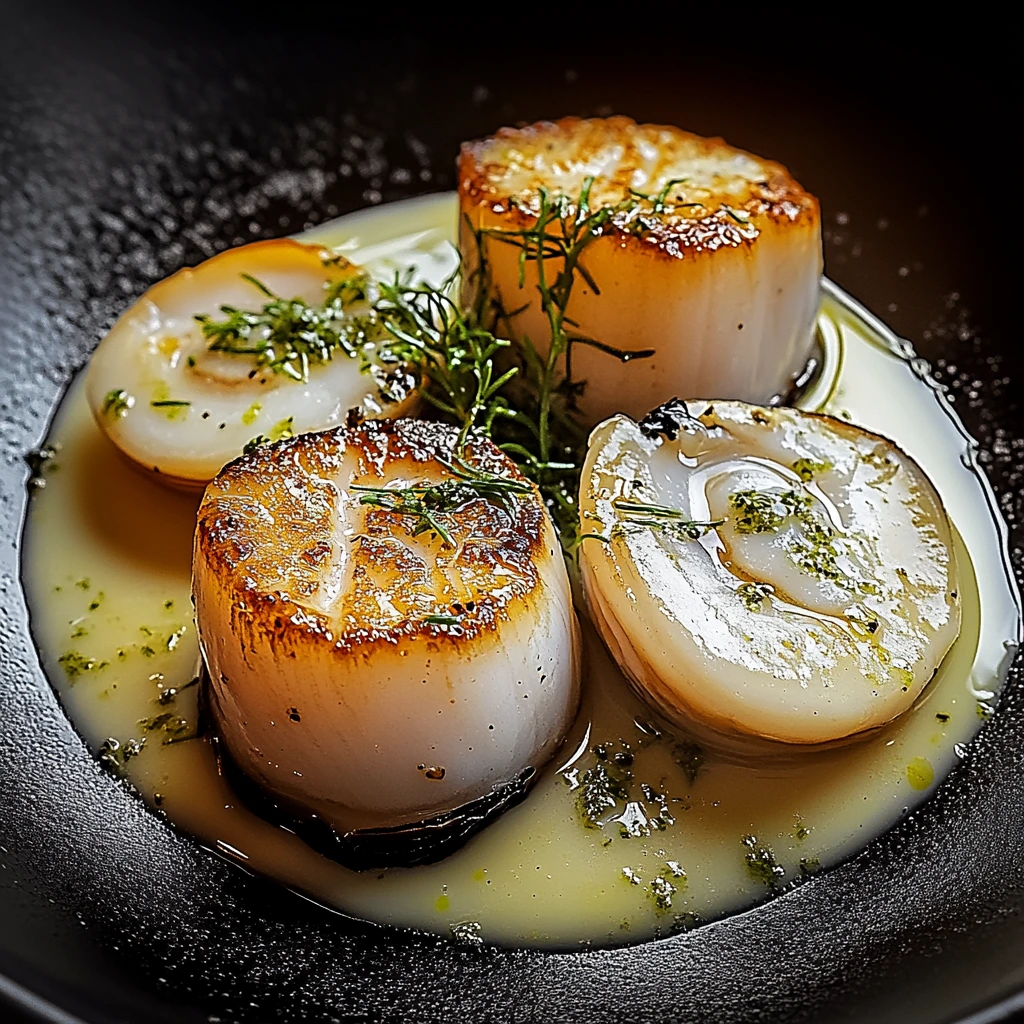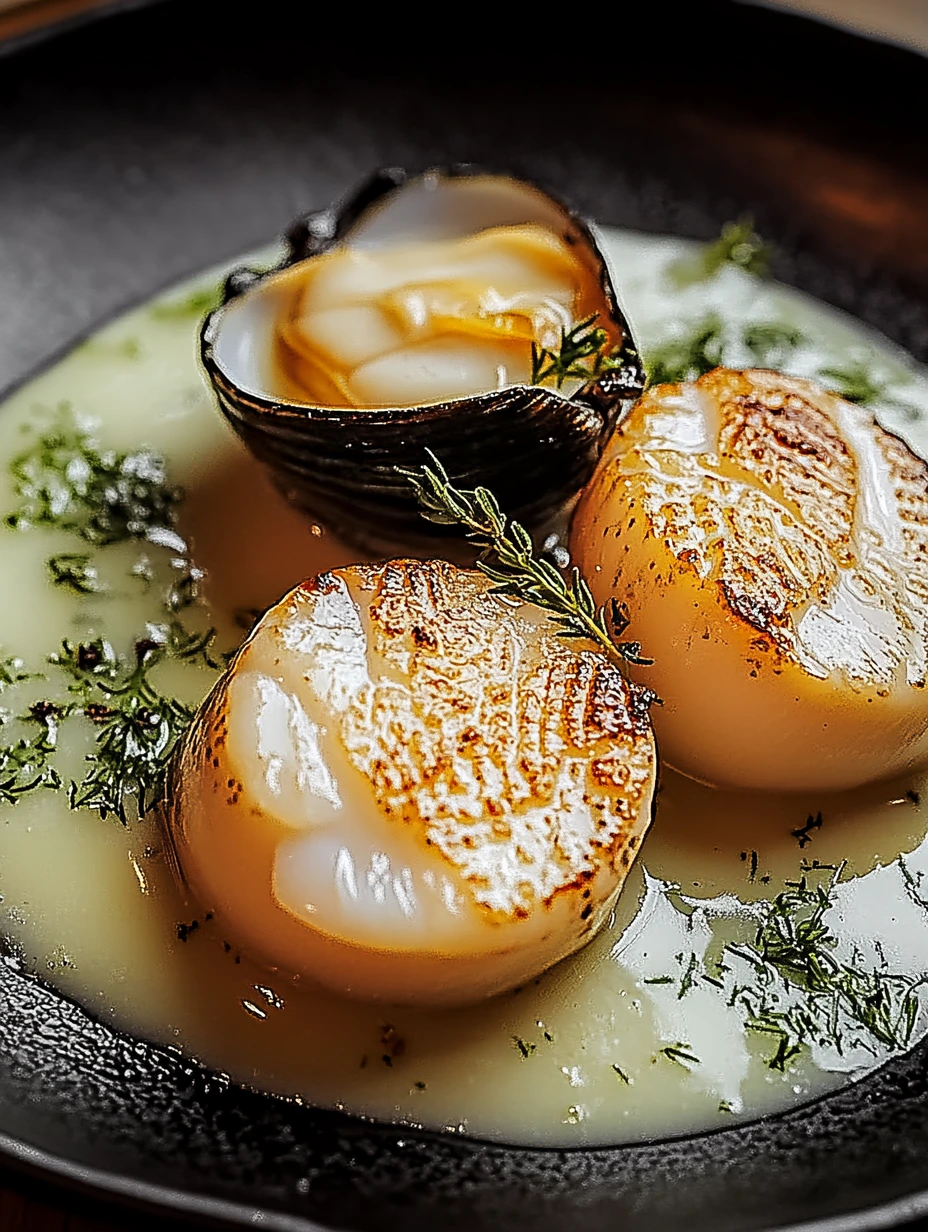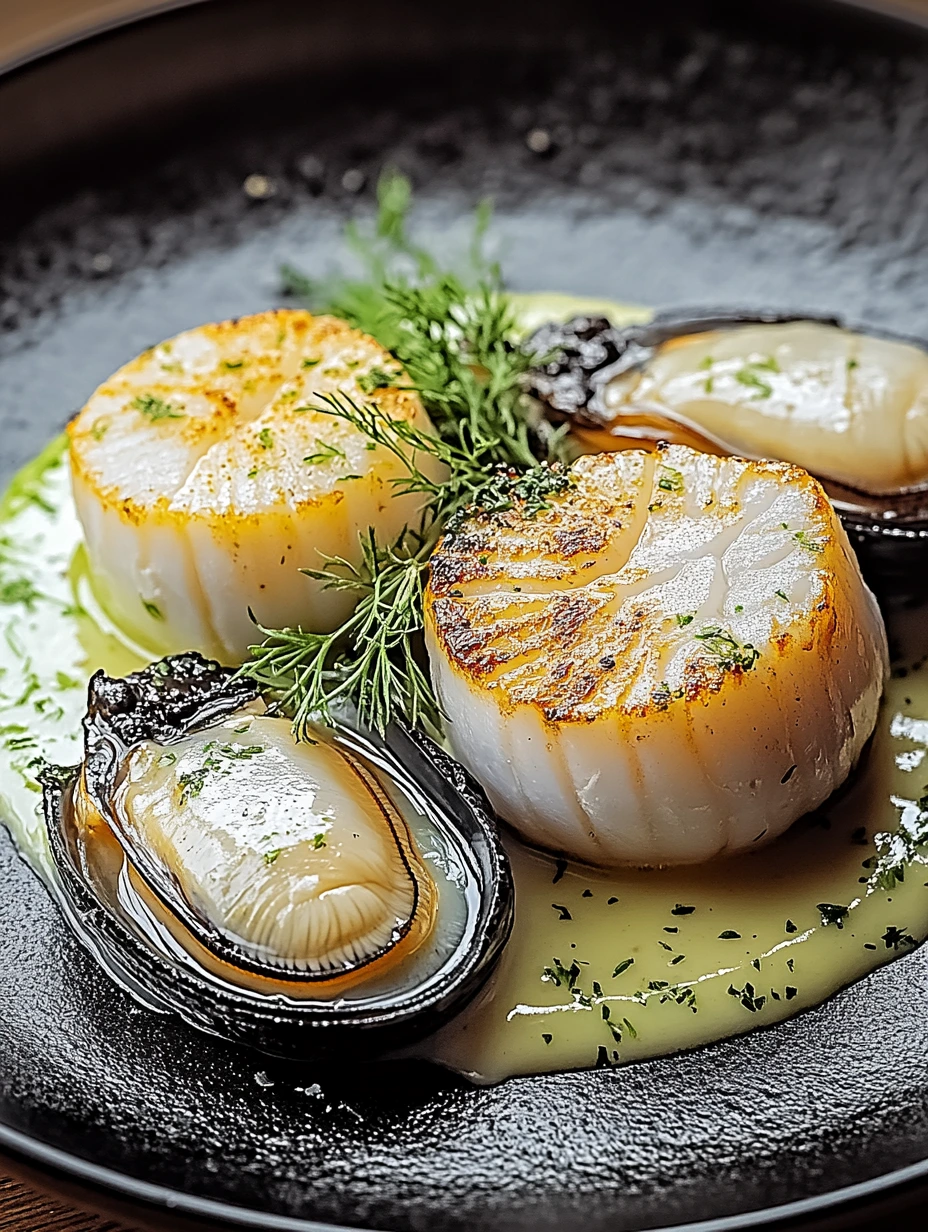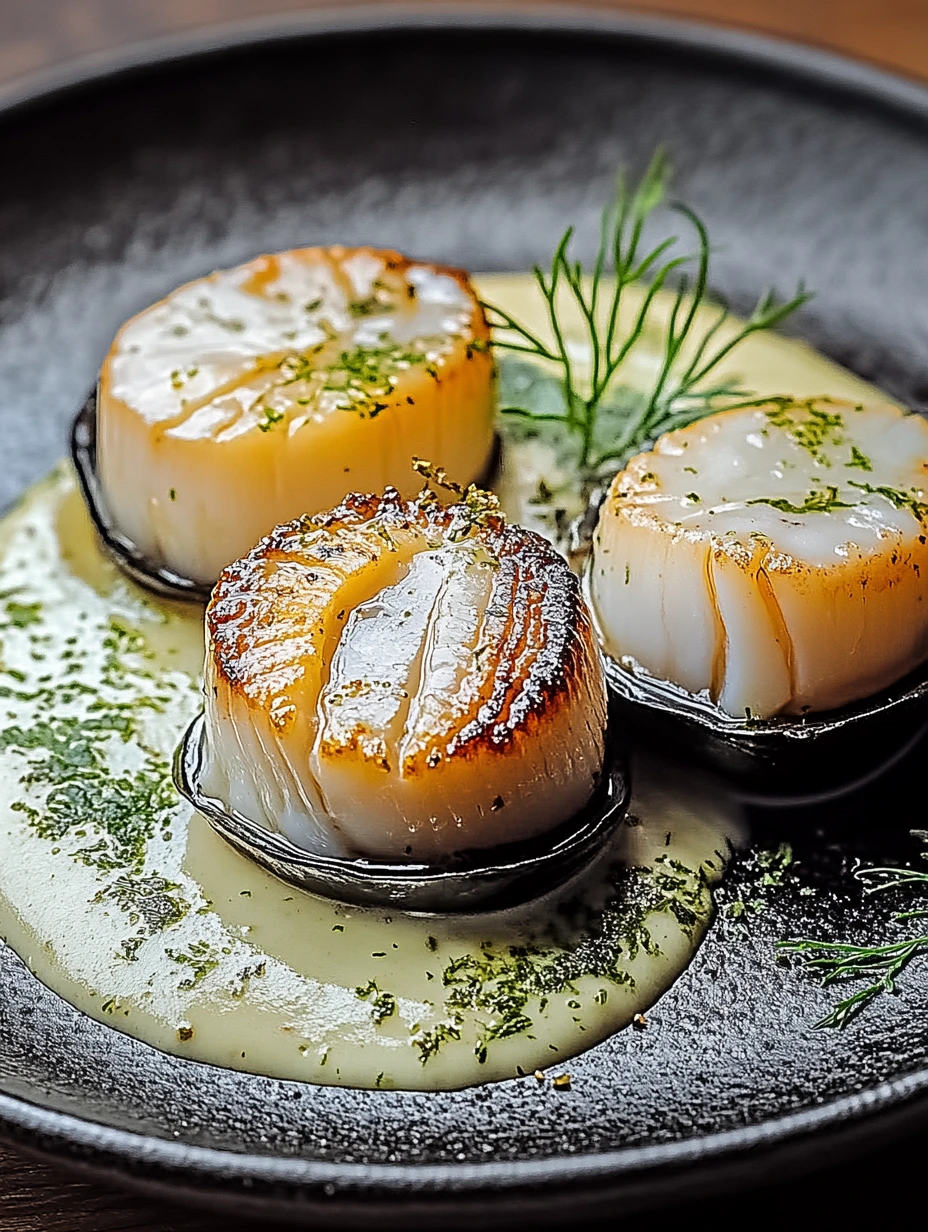 Pin it
Pin it
Scallops with dill bring together kitchen elegance and easy cooking in one plate. These tender, pearly shellfish come wrapped in a creamy sauce with fresh dill flavor. Every bite gives you that amazing contrast between the firm yet melting scallops and the smooth, slightly lemony sauce. Though this dish looks like something from a fancy restaurant, it's actually pretty simple to make, even for beginners who want to wow guests at special dinners.
The first time I made this dish was for a last-minute wedding anniversary. I'd found super fresh scallops at the market that morning and wanted to showcase them without overwhelming their flavor. The dill sauce turned out to be the perfect partner, coating the scallops with a light herby taste without hiding their subtle ocean flavor. My husband, who usually doesn't comment much on my cooking, actually closed his eyes with pleasure at the first bite.
 Pin it
Pin it
Ocean Treasures
- Scallops: Go for freshly caught ones with firm, clear flesh and a mild sea smell without any ammonia odor
- Olive oil: Choose a cold-pressed oil with light fruity taste that won't mask the delicate scallop flavor
- Heavy cream: Its richness gives the sauce that smooth texture and blends perfectly with the cooking juices
- Butter: Use good quality unsalted butter that melts slowly to develop light nutty flavors when you start cooking
- Fresh dill: Its anise and citrus notes naturally complement seafood and bring essential freshness to balance the dish
- Lemon juice: The acidity wakes up the sea flavors and cuts through the richness of the cream
Scallop Prep
- Scallop Prep:
- Start by thoroughly drying your scallops with paper towels to get rid of extra moisture. This step is key for getting that nice golden color when cooking. Lightly season them with fine salt and freshly ground pepper on both sides. Heat a non-stick pan on high until it's really hot, then add the olive oil. Place the scallops in the pan making sure to leave enough space between them so they don't release water. Let them cook without touching for exactly 2 minutes until they get a nice caramelized color, then gently flip them and cook for 1 more minute. The center should still be pearly.
Sauce Creation
- Sauce Creation:
- In the same pan with the scallop cooking juices, turn the heat down to medium and add the butter. Let it melt slowly until it foams slightly, then sprinkle in the flour while whisking hard to avoid lumps. Keep cooking for a full minute to get rid of that raw flour taste. Slowly pour in the heavy cream in a thin stream while continuing to whisk vigorously. The sauce will naturally start to thicken. Now add the Dijon mustard which will bring a slight tang and help the emulsion. Keep cooking on low heat for 2-3 minutes until you get a smooth, coating texture.
 Pin it
Pin it
Aromatic Finishing
- Aromatic Finishing:
- Once the sauce is perfectly blended, add the fresh lemon juice for a welcome bit of acidity. Immediately mix in the finely chopped dill, saving a few sprigs for the final decoration. Stir gently to infuse the flavors into the sauce without reducing it too much. Taste and adjust the salt and pepper to your liking. The sauce should have a perfect balance between the richness of cream, freshness of dill, and the acidity of lemon. Gently put the scallops back into the sauce to warm them slightly while coating them, without cooking them longer which would toughen them.
Fancy Plating
- Fancy Plating:
- For an elegant presentation, ideally use cleaned natural scallop shells. Put a spoonful of sauce at the bottom of each shell, then carefully place the scallops on top. Pour a little extra sauce over them, making sure not to completely cover the scallops. Garnish with a few sprigs of fresh dill and, if you want, a very light grating of lemon zest to enhance the presentation. Serve right away, with a small bunch of green salad simply dressed with olive oil and sea salt to balance the richness of the dish.
I've always had a soft spot for dill, this delicate herb with Nordic flavors that instantly brings to mind Scandinavian fjords. In my family, we've used it for generations to accompany fish and seafood. My grandmother always added it to her shellfish sauces, creating a tradition I happily continue. My son, though picky about herbs, makes an exception for dill which he immediately recognizes by its distinctive smell.
Perfect Side Dishes
To make your dill scallops even better, think about what to serve with them. Steamed basmati rice soaks up the creamy sauce wonderfully while bringing a light, fluffy texture that contrasts with the firmness of the scallops. Purists will especially enjoy a simple celeriac puree with butter, its earthy sweetness complementing the marine freshness of the main dish. For a touch of color and crunch, some quickly blanched green asparagus sautéed in butter makes an ideal spring side dish. Bread is essential so you don't miss a drop of this creamy sauce – go for a crusty baguette with an airy middle.
Creative Twists
The basic dill scallop recipe can easily be customized based on your preferences or what ingredients you have. Replace some of the cream with reduced fish stock to boost the sea flavors and make the dish a bit lighter. Those who like more intense flavors will enjoy adding lightly crushed pink peppercorns which bring a peppery and fruity note that works really well with dill. For a festive version, add some smoked salmon strips to the sauce just before serving, creating an elegant sea-to-sea pairing. Lighter versions work perfectly by replacing some of the cream with thick Greek yogurt, adding a welcome tanginess while keeping the sauce smooth.
Best Storage
While this dish tastes best right after making it, there are a few tricks for handling leftovers. Store the scallops and sauce separately in airtight containers in the fridge, never more than 24 hours to keep the seafood fresh. To reheat, put the sauce in a small pan over very low heat until just warm, then add the scallops only to warm them without cooking them more. Don't use the microwave as it'll make the scallops tough. If you want to prep this dish ahead for guests, make the sauce and keep it in the fridge, then cook the scallops at the last minute for the best results.
 Pin it
Pin it
Chef Tips
- The pan temperature is crucial - it needs to be very hot to perfectly sear the scallops without them releasing water
- Never salt the scallops too far in advance as they'll lose moisture and become rubbery
- A pinch of flaky salt right before serving brings out all the sea flavors in the dish
After years of tweaking this recipe, I've found the secret truly lies in fresh ingredients and precise cooking. A perfectly cooked scallop has that unique texture, both firm and melting, that nothing can replace. The dill sauce should stay light so it doesn't overpower the seafood. I've learned that a touch of acidity makes all the difference - a few extra drops of lemon juice just before serving wakes up all the flavors and creates that perfect harmony that makes this seemingly simple dish truly sophisticated in its balance.
Frequently Asked Questions
- → What should I look for when buying fresh scallops?
- Pick scallops that smell fresh like the ocean, not overly fishy. The texture should be firm and shiny, and the best ones often include their coral for extra flavor.
- → Can I cook scallops from frozen?
- Sure, just thaw them in the fridge first and pat them dry completely with paper towels to keep them from releasing too much water when cooking.
- → What’s a good substitute for dill in this recipe?
- You can swap dill for tarragon or chervil for a similar herby flavor. Chives also work if you're after a milder taste.
- → How do I avoid overcooking scallops?
- Cook them quickly over high heat—aim for about 90 seconds to 2 minutes per side. They should be golden outside but soft and translucent in the middle.
- → What sides go best with scallops?
- They’re great with basmati rice, steamed potatoes, or a lightly dressed green salad. A crisp white wine like Chablis or Sancerre makes a wonderful pairing.
